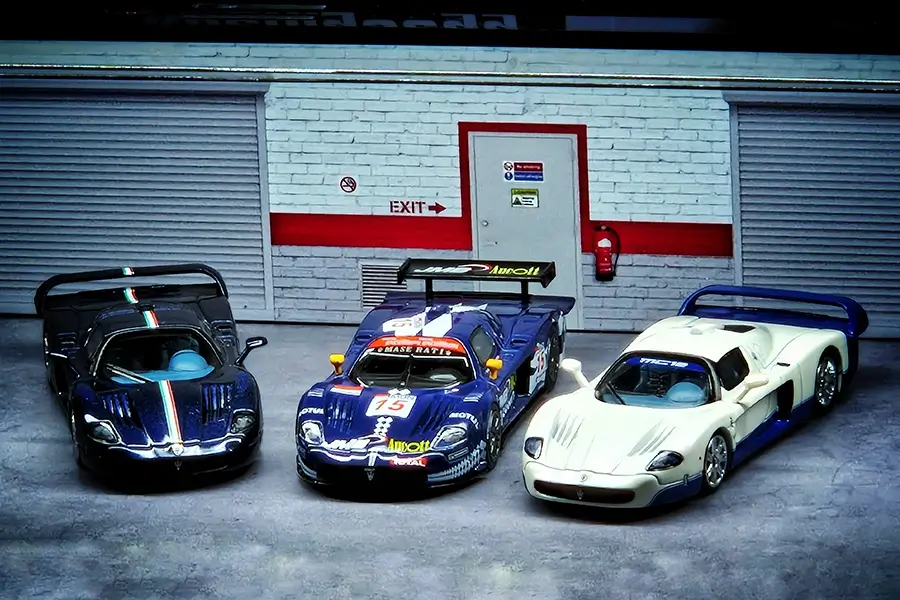
The legacy of the MASERATI MC12 – FEATURETTE
The legendary MC12 in a nutshell:
The MC12 (Maserati Corse, 12 cylinders) represented Maserati in its most extreme performance form. The Stradale - the road version - was created to homologate the model for GT racing.
With the MC12, Maserati returned to international GT racing and the GT1 version was the car to beat on race tracks around the world. The MC12 is the fastest Maserati ever built: acceleration from standstill to 200 km/h in less than 10 seconds. The top speed was 330 km/h.
The technology of the MC12 was based on the Ferrari Enzo, but significant changes were made to the engine, chassis and aerodynamics. At the end of 2006, Maserati presented the MC12 Versione Corse, an even more extreme track-day version of this supercar. While the Ferrari Enzo basically remained a road version (with the exception of the GT Concept version), the MC12 was presented as the ultimate homologated road car of the GT1. After its triumph in the 2005 GT1 World Championship, Maserati launched the MC12 Corsa special series with an output of 755 hp at a price of around 1.2 million euros.
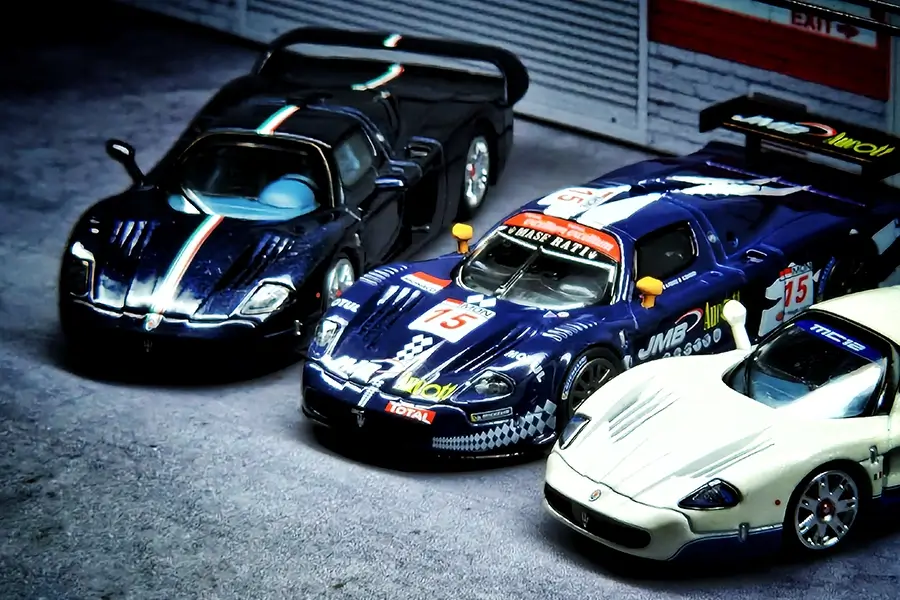
MC12 in depth:
Maserati has been all sorts of things in its history: Part of Citroen in the late 60s, part of de Tomaso in the 70s, even Chrysler in between. In July 1997, Fiat sold 50 per cent of Maserati to its eternal competitor Ferrari, and in 1999 Ferrari took over completely. In 2005, Ferrari sold off again, creating the Abarth-Alfa Romeo-Maserati Group within the Fiat Group. Hence the close relationship with the Ferrari Enzo from Ferrari in the 2000s. Production of the Enzo at Ferrari came to an end in 2004 anyway; 400 units had been built and sold, and the remains should end up at Maserati. The only component that actually remained the same on both vehicles was the windscreen. The design was based on an idea by Giorgetto Giugiaro and was finalised by Frank Stephenson, inventor of the rear wing on the Ford Escort RS Cosworth, the BMW X5, the new Mini and at the time chief designer at Ferrari/Maserati. And although the Maserati was considerably larger, at 1500 kilos it weighed just 20 kilos more than the Ferrari.
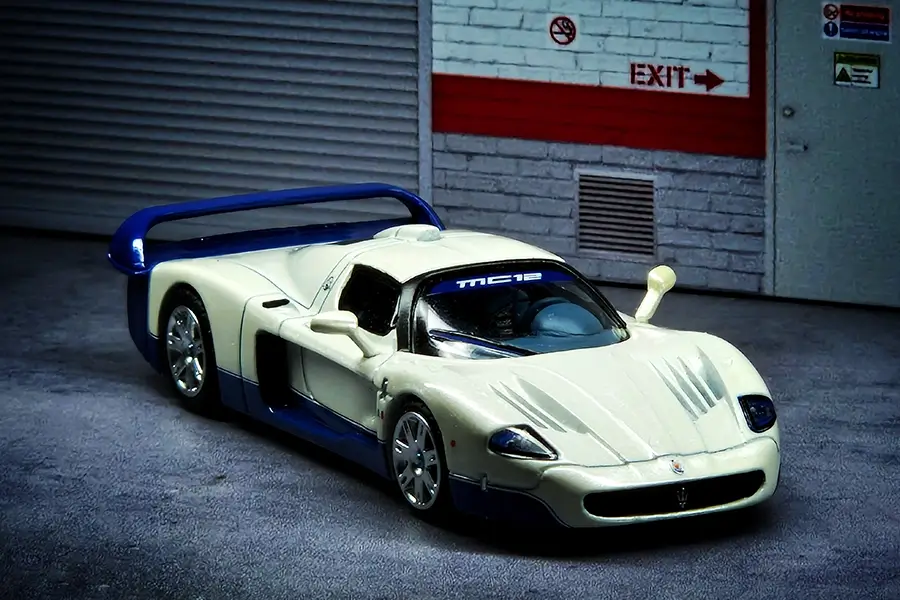
The same 6-litre V12 as in the Enzo was installed longitudinally in the middle, albeit in a slightly throttled form from 660 hp to 630 hp The new price was 600,000 euros, making the Maserati MC12 10 percent cheaper than the Ferrari Enzo. This was despite the fact that 400 units of the Enzo were built and 2 x 25 units of the MC12, i.e. 50. 25 examples of the Maserati MC12 were built in 2004. And then another 25 in 2005, with a nose that was around 15 centimetres shorter. In addition, there were 12 racing cars (designated GT1) and finally, in 2006, another 15 Versione Corse with the racing engine from the GT1 (i.e. 755 hp), which were sold to private individuals for a fee of one million euros, but were not allowed to be driven on public roads.
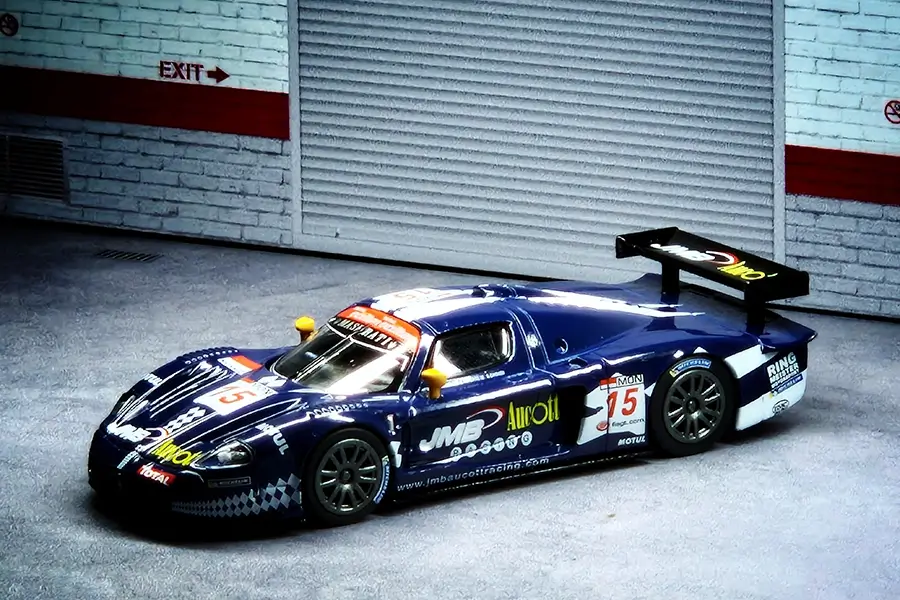
The BBR story:
The model car manufacturer in Saronno, Italy, has been supplying highly detailed models from well-known manufacturers to collectors for many years. Perfect quality meets enormous attention to detail, especially when it comes to the 1:64 scale. In 2022 it was announced that MiniGT and BBR were joining forces to provide us collectors with models in this scale in the best BBR quality. MiniGT provides the know-how, which can be easily recognised by the fact that the BBR models are very similar to MiniGT (nice free-running rubber wheels, carbon applications and metal base). BBR in turn supplies the licence for the production of Italian car brands from the aforementioned Alfa Romeo, Ferrari and Maserati circle. Maserati MC20 and Alfa Romeo Giulia GTAm were the first models from BBR in different colour variants, followed in 2024 by the first Ferrari, the 296 GTB. The three versions of the MC12 remain an absolute gem.
One in the signature colour in Pearl White as the 2004 Stradale, one in the dark blue version as the 2005 Stradale and one as a GT1 racing car from the 2008 season. Hopefully, BBR will also show us the MC12 Corse version, the extreme non-approved road version of the MC12 from 2006.
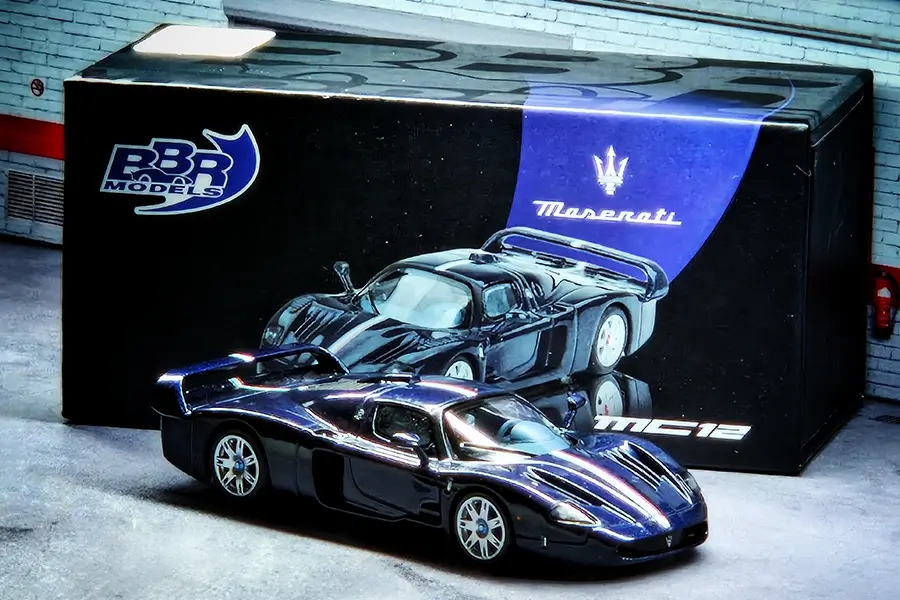
A short anecdote from our collecting life:
The MC12 was also produced and launched by Hot Wheels in 2005. At the time, it was one of the most hyped and sought-after models ever, which we unfortunately never found back then. In 2019, we were able to buy up a collection that included both MC12 variants in white with different wheel types as well as the Mystery MC12 from 2007:
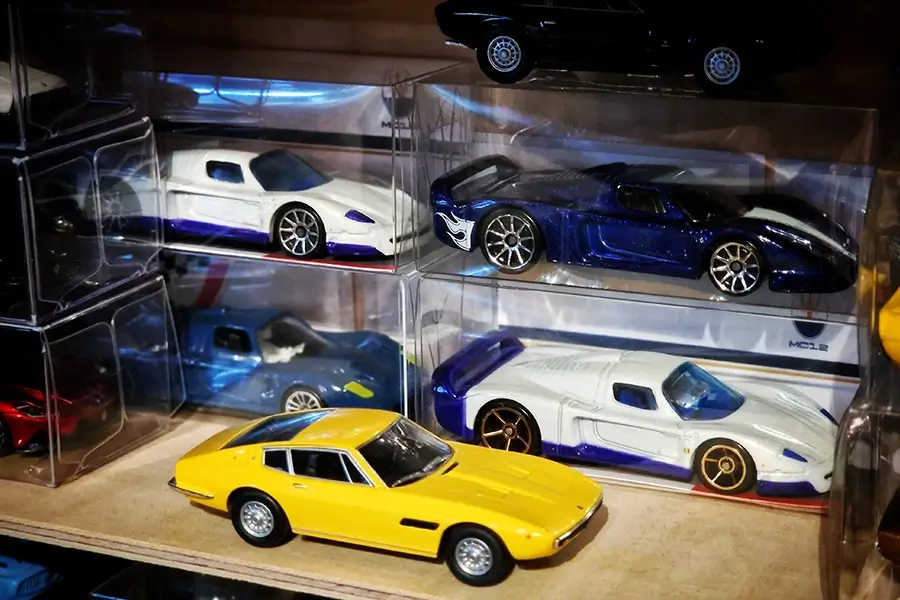
One version of the 2005 pearl white MC12 models came with silver 10 spoke wheels, the same which were used for the 2007 mystery series model which you can see on the top right corner. Hot Wheels additionally added their signature flames on the side at the rear end plus a long white stripe on the hood. The mystery series had no front light and rear light paintjob, at least the 2005 mainliner version had some generally painted front lights in blue-ish purple as well as an italian tricolore flag on the side. The second pearl white mainliner version from 2005 came with bronze FTE wheels from the Realistix series. Once again, it is striking that Hot Wheels typically fitted larger wheels at the rear than at the front. The BBR models naturally come with wheels of the same size at the front and rear as the original! We were also able to get hold of one in its original packaging on a short card:
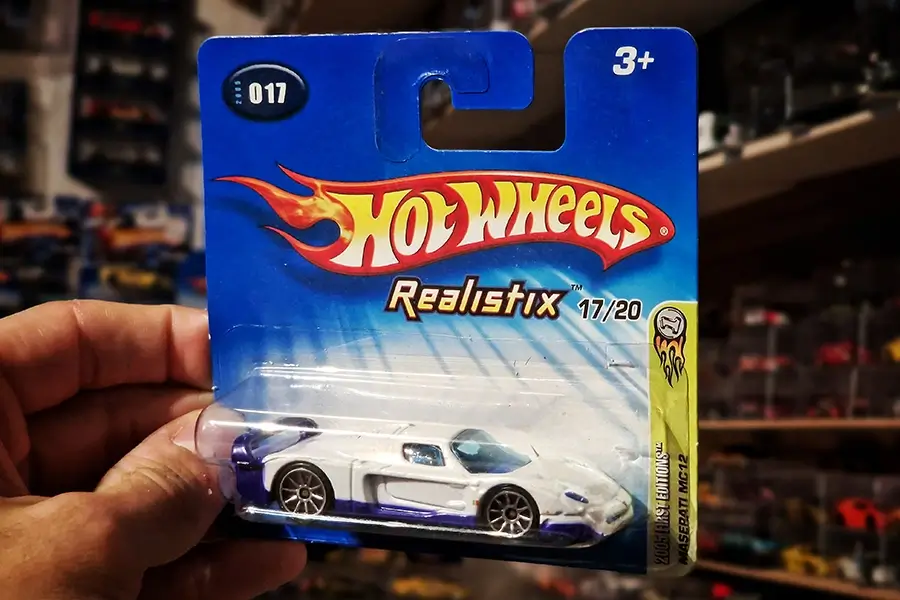
Be sure to check out our direct comparison side by side in a longer video from us on Youtube which you can check out here:


